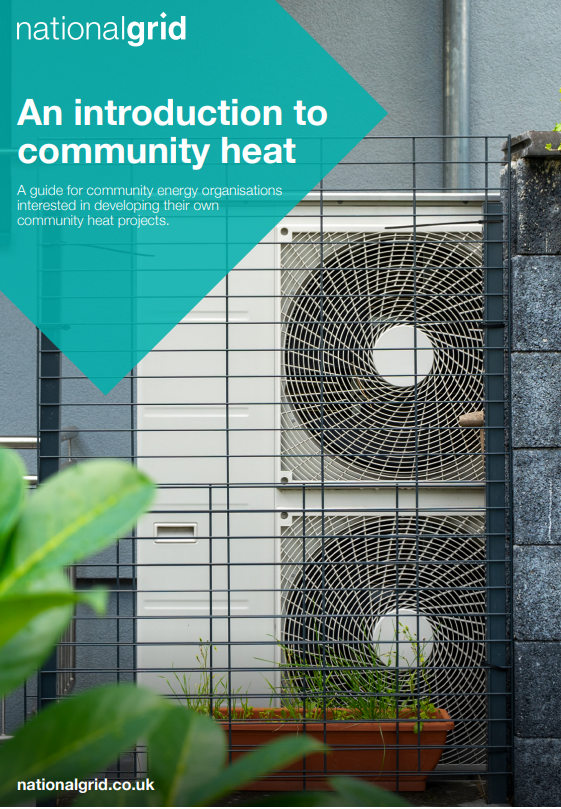A guide for community energy organisations interested in developing their own community heat projects.
Reducing emissions from our homes and buildings is a critical step towards combating climate change. As we strive to create a more sustainable future, it is becoming more and more important to help people move from fossil-fuel heating such as oil and gas boilers onto low-carbon forms of heating like heat pumps or low-carbon heat networks.
 When we think of “low-carbon heating”, we usually think of people installing heat pumps in their homes. However, community energy organisations are increasingly leading and taking ownership of their own low-carbon heat projects, helping local residents and businesses to decarbonise.
When we think of “low-carbon heating”, we usually think of people installing heat pumps in their homes. However, community energy organisations are increasingly leading and taking ownership of their own low-carbon heat projects, helping local residents and businesses to decarbonise.
After all, who better understands the needs and aspirations of a community than the people who call it home? By harnessing the collective power of communities, these projects can provide solutions that align closely with local values and priorities. The purpose of this guide is to provide community energy organisations with the insights and practical information needed to deliver their own community-owned heat initiatives.
Community-led heat projects can play a key role in keeping local benefit at the heart of the heating transition, as well as easing some of the growing pains associated with low-carbon heating uptake.
They can also make these options more financially viable for homeowners and provide communities with the support to not only decarbonise their heating, but also to own and benefit from the solutions.
One of the biggest advantages a community energy organisation has over a third party or private group coming in to provide a solution from outside is that they are inherently embedded in the local area. Community organisations hold a power to connect with the people at the heart of these projects.
This guide delves into the technologies of the following low-carbon heating options:
- Heat pumps (air, ground, and water source)
- Biomass and biogas heating
- Solar thermal
- Hydrogen-ready boilers
The guide also goes into the different types of community heat projects available and provides real-life examples of these, providing a series of useful case studies related to them throughout the guide. These project types include:
- Low-carbon heat network/district heating system
- Street/neighbourhood heating
- Communal heating (in a single building)
- Collective purchase of heat pumps
- Fabric retrofit measures
End of Preview

